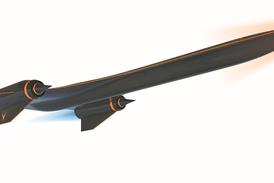Safety board calls on FAA to review system sensitivity
Airbus has pledged to aid the US Federal Aviation Administration in its examination of potential modifications to its A300-600/A310 family's rudder system after the release of the National Transportation Safety Board's (NTSB) final report on the November 2001 American Airlines flight AA587 accident near New York.
As expected, the NTSB determined the probable cause of the accident was "the in-flight separation of the vertical stabiliser as a result of the loads beyond ultimate design that were created by the first officer's unnecessary and excessive rudder pedal inputs". It blames American Airlines' upset recovery training programme (AAMP) for the pilot's over-use of the rudder.
The 12 November 2001 crash killed all 260 people on board the A300-600.
There were two contributory factors to the accident, says the report: "the characteristics of the Airbus A300-600 rudder system design, and elements of the American Airlines AAMP". The first officer's rudder inputs were his reaction to two successive wake turbulence encounters during the aircraft's climb away from New York Kennedy airport.
"[Relatively] light rudder pedal forces and small pedal displacement contributed to the high sensitivity of the A300-600 rudder pedal system at high airspeeds and increased the aircraft's susceptibility to a rudder aircraft-pilot coupling event, "says the report.
In its recommendations, the NTSB says the FAA should "review the options for modifying the Airbus A300-600 and A310 to provide increased protection from potentially hazardous rudder pedal inputs at high airspeeds", and following the review, require appropriate modifications.
Airbus says: "We will be working with the FAA as they explore whether changes should be made. It is that regulatory authority's responsibility to determine what, if any, action should be taken based on the NTSB recommendations."
In the report the NTSB criticises the FAA for not providing regulatory guidance on the conduct of upset-recovery training for pilots. The board says the simulator exercise used by American to portray wake turbulence encounters encouraged pilots "to erroneously associate [them] with the need for aggressive roll upset recovery techniques and develop control strategies that would produce a much different, and potentially surprising and confusing, response if performed in flight."
DAVID LEARMOUNT / LONDON
Source: Flight International























